
Ανακαλύψτε τη διαμονή σας σε Ulanhot
Πληκτρολογήστε τις ημερομηνίες του ταξιδιού σας για να ελέγξετε τις τελευταίες τιμές και τη διαθεσιμότητα
Δημοφιλείς ημερομηνίες ταξιδιού
Σήμερα
Αύριο
Αυτό το Σαββατοκύριακο
Επόμενη εβδομάδα
Φεβρουάριος 2025
- Δευτ.
- Τρ.
- Τετ.
- Πέμ.
- Παρ.
- Σάβ.
- Κυρ.
- 1
- 2
- 3
- 4
- 5
- 6
- 7
- 8
- 9
- 10
- 11
- 12
- 13
- 14
- 15
- 16
- 17
- 18
- 19
- 20
- 21
- 22
- 23
- 24
- 25
- 26
- 27
- 28
Μάρτιος 2025
- Δευτ.
- Τρ.
- Τετ.
- Πέμ.
- Παρ.
- Σάβ.
- Κυρ.
- 1
- 2
- 3
- 4
- 5
- 6
- 7
- 8
- 9
- 10
- 11
- 12
- 13
- 14
- 15
- 16
- 17
- 18
- 19
- 20
- 21
- 22
- 23
- 24
- 25
- 26
- 27
- 28
- 29
- 30
- 31
Σαρώστε προς τα πάνω για προβολή περισσότερων
Φιλτράρισμα κατά:
Βαθμολογία με αστέρια ξενοδοχείου
≤2345
Δημοφιλή φίλτρα
Καταπληκτικό 4.5+Εξαιρετικό 4.0+Καλό 3.5+Ευχάριστο 3.0+Βρήκαμε 187 ξενοδοχεία για εσάς στην πόλη Ulanhot
Επιλέξτε τις ημερομηνίες του ταξιδιού σας για να δείτε τις τελευταίες τιμές.
Πιο δημοφιλές
Κατώτατη τιμή
Πιο κοντά στο κέντρο της πόλης
Κορυφαίες αξιολογήσεις


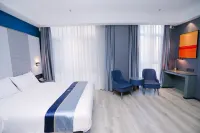
Ξενοδοχείο κοντά σε Ulanhot Railway Station/Wuyi Square,Ulanhot Το 59.7% των επισκεπτών επιλέγουν αυτήν την περιοχή
GGuest User 2024.07.26
內蒙一行,這個酒店是住的最滿意的,性價比最高的!價格合理,環境高檔,服務態度很好!下次如果有機會再來烏蘭浩特,還會選擇住這裏
Excellent
180 κριτικές
4.5/5
Τιμή από
96 BRL
ανά διανυκτέρευση

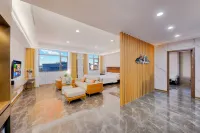
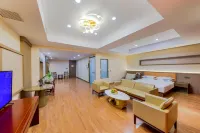
Ξενοδοχείο κοντά σε Ulanhot Municipal Government Area,Ulanhot Το 1% των επισκεπτών επιλέγουν αυτήν την περιοχή
GGuest User 2024.10.06
To be honest, this experience really didn’t work.
The room is large and the facilities in the room are OK, but the small one is difficult to use. The machine is stuck. The air conditioner has no heating function, only cooling.
Then there must be something wrong with the cooperation between the front desk and the service staff. At 21:40 in the evening, I was already asleep, and they asked me if I wanted water. At 7:20 in the morning, I was still not up, and they asked me if I wanted to clean.
My room faced the Government Square, and the aunties danced until late. The soundproofing of other rooms was also very poor.
The temperature of the bathing water in the house is unstable. It is hot for a while and cold for a while. It cannot be kept at a constant temperature. It is very difficult to take a bath.
Finally, let’s talk about the refrigerator in the house. The refrigerator in the house is really loud, about 60 to 70 decibels. I’m really convinced.
The breakfast is okay for a four-star rating. There is one special feature, which is haggis but no coffee. The taste is okay.
Outstanding
633 κριτικές
4.7/5
Τιμή από
140 BRL
ανά διανυκτέρευση

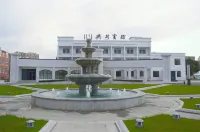
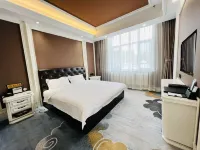
Ξενοδοχείο κοντά σε Ulanhot Railway Station/Wuyi Square,Ulanhot Το 59.7% των επισκεπτών επιλέγουν αυτήν την περιοχή
GGuest User 2024.07.01
Very good hotel, beautiful atmosphere and clean, is my favorite hotel, because the decoration in the room, white wardrobe furniture and the whole set of white furniture are like living at home! The service attitude of the little girl at the front desk is very good, the breakfast is rich, if I go to Ulanhot, I will choose this hotel. The location is good, next to Genghis Khan Park and his temple, the supermarket chain is also next to it, and the traffic is convenient! The bus on multiple roads is at the door, to the city center and the train station!
Excellent
105 κριτικές
4.4/5
Έλεγχος διαθεσιμότητας

Μπορεί να προτιμάτε
Ξενοδοχεία με πρωινόΞενοδοχεία με δίκλινο δωμάτιο με 2 μονά κρεβάτιαΞενοδοχεία με 1 διπλό κρεβάτιΞενοδοχεία με πισίναΞενοδοχεία με δωρεάν ακύρωση

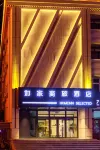

Ξενοδοχείο κοντά σε Ulanhot Railway Station/Wuyi Square,Ulanhot Το 59.7% των επισκεπτών επιλέγουν αυτήν την περιοχή
MMomix6 2024.07.30
Yes, the boss is very welcoming, the room is very good, the facilities are also very good, the air conditioning water heater is all available, very clean, very suitable for living, the surrounding snacks are also very convenient, there is also a square suitable for walking
Outstanding
250 κριτικές
4.6/5
Τιμή από
112 BRL
ανά διανυκτέρευση
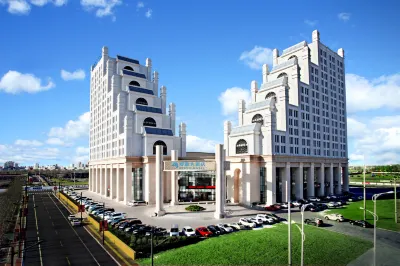
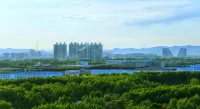
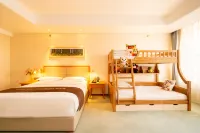
Ξενοδοχείο κοντά σε Ulanhot Municipal Government Area,Ulanhot Το 1% των επισκεπτών επιλέγουν αυτήν την περιοχή
GGuest User 2024.10.26
The environment of the hotel is also very elegant. I like the style of this hotel very much. Every stay is very good. The service at the front desk is very pleasant. You can take care of my friends and guests very well. Thank you very much to the friends at the front desk. Sincere, enthusiastic, enthusiastic, patient, meticulous and thoughtful. The service is very intimate and arranged for us very well. The check-in business level is very high, very excellent, very efficient, showing the very good image of Boyuan Hotel, representing the hotel's excellent service. Give them a thumbs up, very good, excellent! The hotel room is very beautiful, the room style is very good, the layout is particularly reasonable, the fashion is very strong, the facilities are new and very good, the facilities are perfect, the facilities are set reasonably, the carpet is very clean and comfortable, soft, the room is clean and clean, the window is bright and clean, spotless, Very satisfied with the rest, the bedding is very comfortable. The hotel's cafeteria is very good, the variety is rich, the quality of the meat is also very good, the price is affordable. Very favorable and cost-effective. The overall facilities of the hotel are complete, the price is cheap, recommended! Will stay at this hotel again next time. Very pleasant stay experience.
Outstanding
984 κριτικές
4.8/5
Τιμή από
208 BRL
ανά διανυκτέρευση
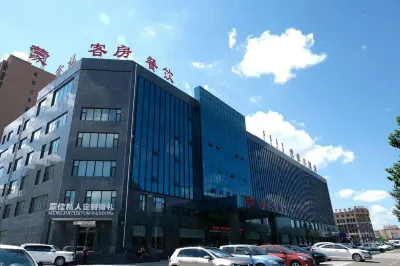

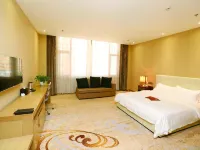
Ξενοδοχείο κοντά σε Ulanhot Railway Station/Wuyi Square,Ulanhot Το 59.7% των επισκεπτών επιλέγουν αυτήν την περιοχή
GGuest User 2023.08.10
The price is super high, the hotel hardware is good, the items are clean and tidy, the parking is convenient, and the breakfast is rich. Give some suggestions for improvement: the bedding is best equipped with two pillows for one person; the mattress is best softer. There is a chain hot pot restaurant downstairs, which is also affordable. A vegetable platter is 1 meter long and only 18 yuan... Have the opportunity to come to Hinggan League and will continue to stay at this hotel.
Very Good
91 κριτικές
4.1/5
Τιμή από
118 BRL
ανά διανυκτέρευση
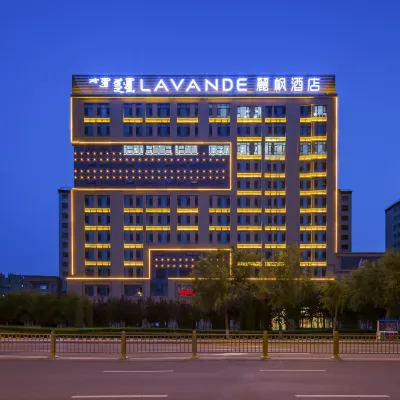
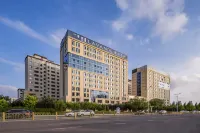
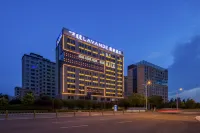
Ξενοδοχείο κοντά σε Wanda Plaza/Ulan Muqir Palace Grand Theatre,Ulanhot Το 39.4% των επισκεπτών επιλέγουν αυτήν την περιοχή
BBaisuyu 2024.04.02
Very good, very good, very good, very good, very good, very good, very good, very good, very good, very good, very good, very good, very good, very good, very good, very good, very good, very good, very good, very good, very good
Outstanding
1068 κριτικές
4.7/5
Τιμή από
161 BRL
ανά διανυκτέρευση
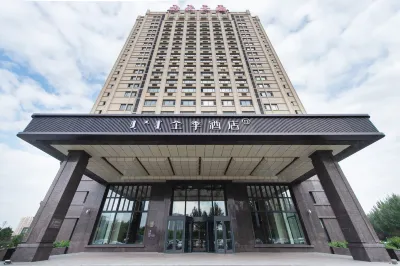

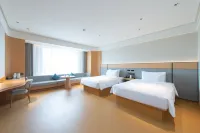
Ξενοδοχείο κοντά σε Ulanhot Railway Station/Wuyi Square,Ulanhot Το 59.7% των επισκεπτών επιλέγουν αυτήν την περιοχή
Zzhangyin0622 2024.10.04
Hardware TV, good bedding, good health, large room, shower 🚿 nozzle is too bad, not worthy of this price. The front desk is on the first floor and the hotel is on the 21st floor and the 23rd floor.
Service: Generally, there is no person picking up luggage at the door, and there is no trash can at the door. There is no luggage cart. In short, I can't see the waiter. The two girls at the front desk are also faint and can't feel the enthusiasm at all. So the others give you five points and the service gives three points.
Outstanding
304 κριτικές
4.7/5
Τιμή από
182 BRL
ανά διανυκτέρευση

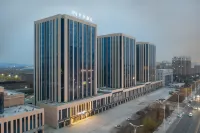
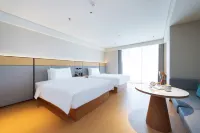
Ξενοδοχείο κοντά σε Wanda Plaza/Ulan Muqir Palace Grand Theatre,Ulanhot Το 39.4% των επισκεπτών επιλέγουν αυτήν την περιοχή
GGuest User 2024.12.05
1. First of all, praise the front desk lady sister service is very good and very gentle! Because I went out to play late, Miss Sister also helped to re-adjust a new room. Thank you here.
2. The room with a warm style standard throughout the season, the stay is very comfortable and very satisfied! It happened to catch up with the snow, and the snow scene at night was beautiful through the window. After a day of tiredness, I can finally rest. Happy
Outstanding
657 κριτικές
4.7/5
Τιμή από
208 BRL
ανά διανυκτέρευση


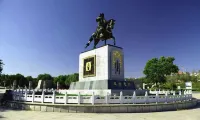
Ξενοδοχείο κοντά σε Ulanhot
GGuest User 2023.04.29
The hotel has a nice view. You can see that the service attitude of the whole city is very good. The reception at the front desk is warm and tidy. The room is clean and tidy. The parking lot is right at the entrance of the hotel. There is a dedicated person in charge. I am very satisfied and trustworthy. The breakfast is also very good. There are Mongolian specialties for the buffet. Fried rice cheese, a lot of yogurt or something
Very Good
256 κριτικές
4.2/5
Τιμή από
79 BRL
ανά διανυκτέρευση
Δείτε γνώμες άλλων ταξιδιωτών για τα ξενοδοχεία στην πόλη Ulanhot
Εμφάνιση όλων
Δείτε αληθινές αξιολογήσεις και πληροφορίες από πραγματικούς ταξιδιώτες για να σας βοηθήσουν να βρείτε το ιδανικό κατάλυμα
4.8/5
Outstanding
AAnonymous UserThe rooms are fully equipped, even with refrigerators and washing machines, which is very convenient. The room was very clean and the bedding was very new. The most satisfying thing was the bathroom. The shower room and the toilet were really separated, so that the water in the shower room would not splash everywhere. It was not easy for elders and children to slip. One thing is pet friendly. This is the most satisfying room I booked on this trip. And the price is very beautiful 🤩 The beauty and handsome guy of the hotel are very warm and friendly. The beautiful beauty also recommended me delicious food nearby.
fanxiyijing
Ξενοδοχείο σε Wanda Plaza/Ulan Muqir Palace Grand Theatre, Ulanhot Το 39.4% των επισκεπτών επιλέγουν αυτήν την περιοχή
Τιμή ανά διανυκτέρευση από:124 BRL
4.8/5
Outstanding
IicedewerVery nice room, booked four rooms at once, everyone lived well. The room is oversized and the hot water is very comfortable. Easy to eat and convenient parking. The hot pot restaurant downstairs is also good. I punched in a lot of red attractions and went to Chaersen Reservoir. It was great. The boss recommended the Ulan Maodu grassland. It was super super. Although the scenic spot could not get in, I caught up with Nadamu. I was so lucky.
Shuji Hotel
Ξενοδοχείο σε Wanda Plaza/Ulan Muqir Palace Grand Theatre, Ulanhot Το 39.4% των επισκεπτών επιλέγουν αυτήν την περιοχή
Τιμή ανά διανυκτέρευση από:99 BRL
4.7/5
Outstanding
GGuest UserThe service is very good, health is OK, because the is to stay for one night before catching the plane, take a taxi in and out, I don't know if the location is good.
Staying for two breakfasts, breakfast varieties have to be selected, okay. Milk is good. The staff attitude is pretty good. There are not many guests staying, very quiet.
It is the road construction at the entrance of the hotel recently, and it will be a bit noisy during the day.
Not on the main road, it is estimated that there are not many guests at ordinary times.
Home Inn Neo (Ulanhot Railway Station Genghis Khan Temple Shop)
Ξενοδοχείο σε Ulanhot Railway Station/Wuyi Square, Ulanhot Το 59.7% των επισκεπτών επιλέγουν αυτήν την περιοχή
Τιμή ανά διανυκτέρευση από:135 BRL
4.7/5
Outstanding
ZZhangzzzVery cost-effective e-sports hotel, I have been with my buddies many times, the boss is very good, the bedding is clean.
Yule Hui Hotel Department 1
Ξενοδοχείο σε Ulanhot Railway Station/Wuyi Square, Ulanhot Το 59.7% των επισκεπτών επιλέγουν αυτήν την περιοχή
Τιμή ανά διανυκτέρευση από:129 BRL
4.6/5
Outstanding
XXiantingxinbu0240413The hotel is located in the economic development zone, a little far from the city, but the transportation is convenient. From Ulanhot East Expressway, you can reach the hotel soon. Parking is convenient. It is very suitable for our self-driving tour. The hotel facilities are very complete, especially the front desk clerk, a enthusiastic Mongolian girl, patiently answering various questions for us. Under her guidance, on the day of our stay, we drove to visit the Genghis Khan Temple and visited Genghis Khan Park. And I have an understanding of the road to Aershan the next day. There are restaurants around to eat, and the price is very cheap.
4.4/5
Excellent
TTuscany RoseOverall I had a positive experience. Th decor and amenities are a bit basic but it's worth the price. You're very close to the train station so that's convenient and the staff were very friendly and helpful.
Hotel Regency
Ξενοδοχείο σε Ulanhot Railway Station/Wuyi Square, Ulanhot Το 59.7% των επισκεπτών επιλέγουν αυτήν την περιοχή
Τιμή ανά διανυκτέρευση από:50 BRL
4.4/5
Excellent
GGuest UserHygienic: The sheets are clean and tidy
Service: Excellent service attitude
Environment: good lighting, good ventilation in the house
Facilities: air conditioning temperature is suitable, the house is fully equipped, the whole house is intelligent
O K Smart Hotel (Ulanhot city center storet)
Ξενοδοχείο σε Ulanhot Railway Station/Wuyi Square, Ulanhot Το 59.7% των επισκεπτών επιλέγουν αυτήν την περιοχή
Τιμή ανά διανυκτέρευση από:62 BRL
4.2/5
Very Good
GGuest UserVery good, if the room is added a luggage rack, it is better to install a stainless steel shelf for hanging towels in the bathroom, which is convenient for passengers to hang things and wash clothes.
Ulanhot Derun Hotel
Ξενοδοχείο σε Ulanhot Railway Station/Wuyi Square, Ulanhot Το 59.7% των επισκεπτών επιλέγουν αυτήν την περιοχή
Τιμή ανά διανυκτέρευση από:76 BRL
4.1/5
Very Good
GGuest UserVery close to the train station, go out along the left side of the station, pass the RT-Mart supermarket (called Fei Niu Express), cross the road and go straight, there are restaurants around. The hotel has public health, there are also bathrooms to take a bath, cost-effective.
Ulanhot Tianpeng Hotel
Ξενοδοχείο σε Ulanhot Railway Station/Wuyi Square, Ulanhot Το 59.7% των επισκεπτών επιλέγουν αυτήν την περιοχή
Τιμή ανά διανυκτέρευση από:11 BRL
4.0/5
Very Good
GGuest UserThe room is clean, his home is decorated in a unique style, one floor, one style, I like it very much, the boss is reasonable, very understanding of outsiders, the boss also sent us to the airport for free.
Xintian'e Boutique Hotel
Ξενοδοχείο σε Ulanhot Railway Station/Wuyi Square, Ulanhot Το 59.7% των επισκεπτών επιλέγουν αυτήν την περιοχή
Τιμή ανά διανυκτέρευση από:61 BRL
Συχνές ερωτήσεις σχετικά με την πόλη Ulanhot
Ποια είναι τα δημοφιλέστερα ξενοδοχεία στην τοποθεσία Ulanhot;
Η τοποθεσία Ulanhot έχει πολλά δημοφιλή ξενοδοχεία. Είτε ταξιδεύετε για επαγγελματικούς λόγους είτε για διακοπές, το O K Smart Hotel (Ulanhot city center storet), Home Inn Neo (Ulanhot Railway Station Genghis Khan Temple Shop) και Wulanhaote Mengjia Hotel είναι τα προτιμώμενα ξενοδοχεία.
Ποια είναι η μέση τιμή των ξενοδοχείων στην τοποθεσία Ulanhot;
Για ξενοδοχεία στην τοποθεσία Ulanhot, η μέση τιμή τις καθημερινές είναι 148 BRL, η μέση τιμή για τα Σαββατοκύριακα (Παρασκευή-Σάββατο) είναι 150 BRL.
Ποια είναι τα προτεινόμενα ξενοδοχεία πολυτελείας στην τοποθεσία Ulanhot;
Η τοποθεσία Ulanhot έχει πολλά ξενοδοχεία πολυτελείας με διαφορετικό στιλ, το XingAn League Berun Hotel είναι πολύ δημοφιλές. Τα
Ποια ξενοδοχεία στην τοποθεσία Ulanhot παρέχουν πρωινό υψηλής ποιότητας;
Το XingAn League Berun Hotel,Changfeng International Hotel και Wulanhaote Mengjia Hotel παρέχουν πρωινό υψηλής ποιότητας. Ξεκινήστε τη μέρα σας με ένα υπέροχο πρωινό!
Ποια ξενοδοχεία στην τοποθεσία Ulanhot ενδείκνυνται για ταξιδιώτες με παιδιά;
Το XingAn League Berun Hotel, Xing'an Hotel και Lavande Hotel Ulanhot Union Office Wanda Plaza είναι κατάλληλα για οικογενειακά ταξίδια. Απολαύστε ένα ταξίδι με τα παιδιά και άλλα μέλη της οικογένειάς σας!
Ποια ξενοδοχεία στην τοποθεσία Ulanhot διαθέτουν εγκαταστάσεις γυμναστικής;
Το O K Smart Hotel (Ulanhot city center storet), Home Inn Neo (Ulanhot Railway Station Genghis Khan Temple Shop) και Wulanhaote Mengjia Hotel διαθέτουν εγκαταστάσεις γυμναστικής. Ικανοποιήστε τις ανάγκες σας για γυμναστική ακόμη και όταν ταξιδεύετε!
Ποια ξενοδοχεία στην τοποθεσία Ulanhot επιτρέπουν τα κατοικίδια ζώα;
Το Ulanhot Yonghe City Hostel, Tiger Garden Hotel και Ulanhot Yuanzhike Hotel επιτρέπουν τα κατοικίδια ζώα. Πάρτε τα κατοικίδιά σας μαζί κατά τη διάρκεια της διαμονής σας!
Ποια ξενοδοχεία στην τοποθεσία Ulanhot διαθέτουν πισίνα;
Το O K Smart Hotel (Ulanhot city center storet), Home Inn Neo (Ulanhot Railway Station Genghis Khan Temple Shop) και Wulanhaote Mengjia Hotel είναι ξενοδοχεία με πισίνα. Μείνετε σε οποιοδήποτε από αυτά τα ξενοδοχεία για να κάνετε μπάνιο σε πισίνα!
Ποια ξενοδοχεία στην τοποθεσία Ulanhot παρέχουν δωρεάν Wi-Fi;
Είτε ταξιδεύετε για επαγγελματικούς λόγους είτε για διακοπές, η σύνδεση στο Διαδίκτυο είναι απαραίτητη. Το O K Smart Hotel (Ulanhot city center storet), Home Inn Neo (Ulanhot Railway Station Genghis Khan Temple Shop) και Wulanhaote Mengjia Hotel είναι δημοφιλή ξενοδοχεία με δωρεάν Wi-Fi.
Ποια ξενοδοχεία στην τοποθεσία Ulanhot παρέχουν υπηρεσίες μεταφοράς από και προς το αεροδρόμιο;
Δεν γνωρίζετε την τοποθεσία Ulanhot; Το O K Smart Hotel (Ulanhot city center storet), Home Inn Neo (Ulanhot Railway Station Genghis Khan Temple Shop) και Wulanhaote Mengjia Hotel παρέχουν υπηρεσίες μεταφοράς από και προς το αεροδρόμιο.
Ποια ξενοδοχεία στην τοποθεσία Ulanhot διαθέτουν σπα που αξίζει να δοκιμάσει κανείς;
Κουραστήκατε από το ταξίδι; Το O K Smart Hotel (Ulanhot city center storet), Home Inn Neo (Ulanhot Railway Station Genghis Khan Temple Shop) και Wulanhaote Mengjia Hotel παρέχουν υπηρεσίες σπα με υψηλή βαθμολογία.
Ποιες προσφορές ξενοδοχείων υπάρχουν στην τοποθεσία Ulanhot;
Η Trip.com παρέχει διάφορες προσφορές και εκπτώσεις για τους χρήστες όλο τον χρόνο. Μπορείτε να επισκεφθείτε τη σελίδα προσφορών για να δείτε ποιες προσφορές είναι διαθέσιμες στην Trip.com.
Τοπικές ταξιδιωτικές πληροφορίες
| Υψηλότερη τιμή | 543 BRL |
|---|---|
| Κατώτατη τιμή | 30 BRL |
| Αριθμός κριτικών | 16,918 |
| Αριθμός ξενοδοχείων | 412 |
| Μέση τιμή (καθημερινές) | 148 BRL |
| Μέση τιμή (Σαββατοκύριακα) | 150 BRL |